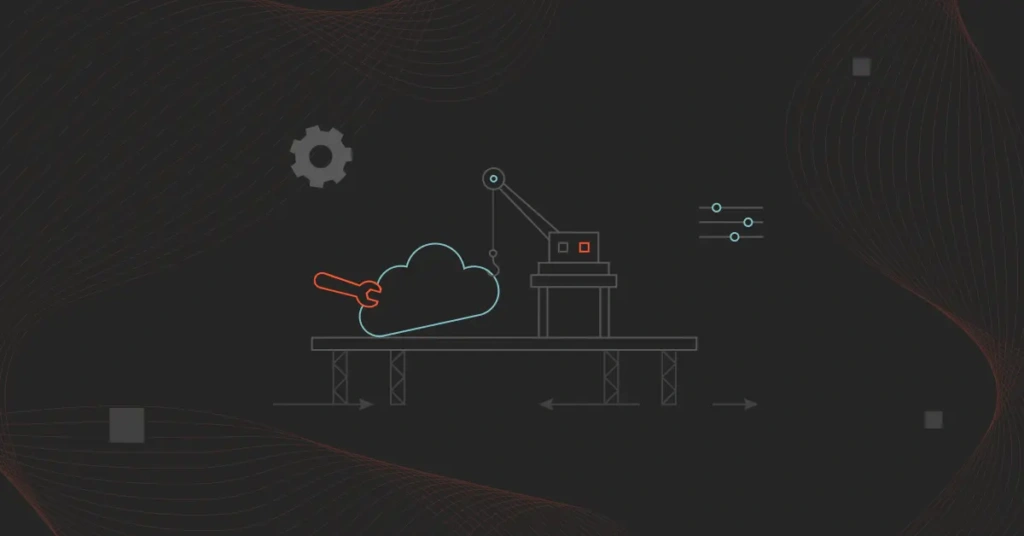The cloud offers many benefits, including scalability, cost savings, and operational efficiency. But here’s the deal. Organizing, monitoring, and controlling a cloud environment can become complex as workloads, applications, services, and underlying infrastructure grow.
Businesses can better control and monitor their cloud infrastructure services, resources, and data using cloud management software. The best cloud management platforms also offer multi-cloud, security, and compliance management tools, resulting in better business outcomes.
But that’s not all there is to cloud management platforms.
What Does Cloud Management Software Do?
Organizations use CPM software to:
- Optimally access, provision, and allocate cloud resources.
- Build new resources via self-service.
- Utilize built-in or custom workflows to automate cloud management tasks efficiently, rapidly, and continuously.
- Provide monitoring, reporting, and alerting tools over cloud services, workloads, data, application performance, etc.
- Keep track of resource consumption and related costs to prevent overspending in the cloud.
- Scale the environment automatically in response to events or other triggers, ensuring optimal cloud service performance, availability, etc.
- Implement cross-platform interoperability.
- Sustain real-time and ongoing cloud compliance and governance.
A robust cloud management platform can include many more features, but these capabilities serve as a baseline.
Now, let’s take a look at the primary advantages it offers.
Benefits of Cloud Management Software
Here are some of the key benefits of using cloud management software:
- Cost management. Helps track cloud spending, identify unused resources, and adjust resource allocation to avoid waste. It also supports budgeting and forecasting with clear cost visibility.
- Security and compliance. It monitors threats and vulnerabilities in real-time, allowing for proactive risk management. Through automated controls and reporting, it helps maintain compliance with standards like GDPR and HIPAA.
- Visibility and control. Centralizes multi-cloud and hybrid environment management, making monitoring all resources easier. Dashboards and reports provide real-time insights into performance and usage.
- Automation. Reduces manual effort by automating tasks like resource provisioning, scaling, and updates. This increases efficiency and enables IT teams to focus on strategic tasks.
- Performance monitoring. Tracks application performance, identifies bottlenecks and recommends ways to improve efficiency. It helps ensure high availability by resolving issues fast.
- Scalability. Scales with your cloud environment, ensuring performance, security, and cost control are maintained as your needs expand.
- Informed decision-making. Provides insights through analytics, helping organizations make better decisions about cloud usage, cost management, and performance.
- Multi-cloud and hybrid support. Enables smooth management across different cloud providers and hybrid environments.
What To Look For When Choosing The Best Cloud Management Software
With the help of the CloudZero engineering team, we have compiled this list of factors to consider when choosing a cloud management software solution.
Scalability
Cloud environments are dynamic and ever-evolving. This means you’ll want cloud management software that is flexible enough to scale with your organization’s growth and changing needs. This includes automatically or manually scaling resources up or down, supporting multiple cloud platforms, and seamlessly integrating with your existing systems.
Security and Compliance
Picture this. An average data breach costs just under $5 million to resolve, according to IBM’s 2023 Cost of a Data Breach report. Given the sensitive nature of cloud data, you’ll want cloud management software that includes features like data encryption, access controls, and compliance certifications. This can help protect your data and ensure regulatory compliance.
Performance monitoring and optimization
Modern, efficient cloud management solutions should offer robust performance monitoring and optimization capabilities. This includes real-time resource utilization monitoring, auto-scaling based on demand, and continuously identifying bottlenecks or performance issues.
Contextual reporting
Once you’ve detected a cloud issue, you need to identify its source. A cloud management platform that offers root cause analysis can help here. This allows you to pinpoint the critical points of failure so you know what needs to be fixed.
Identifying the root issue quickly reduces the time it takes to repair (MTTR) and enables you to fix and restore service availability with minimal impact.
Compatibility
You likely use a stack of different tools in your cloud. As such, you’ll need cloud management software that integrates with your existing infrastructure and systems.
Seamless integration prevents errors and service disruptions. For example, a platform that doesn’t integrate well with your cloud environment may generate multiple versions of the same data, leading to confusion, errors, and data loss.
Interoperability
This factor is especially crucial for you if you are one of the 81% of organizations operating or planning to operate in a multi-cloud or hybrid cloud environment.
You’ll want a cloud management solution supporting a seamless connection across different platforms. This will allow seamless deployment, management, and optimization within a single platform.
Intuitive interface
A user-friendly interface enhances productivity for users. It can also reduce the learning curve for your software engineers or admins. We recommend you get the team that’ll use the solution involved in the selection process. They can help you pick an intuitive design that is easy to navigate, configure, and use to effectively manage a complex cloud environment.
Automation and orchestration
Manual work can be time-consuming, error-prone, and tedious. A solution that offers automation and orchestration capabilities can streamline cloud management processes.
Look for features like automated provisioning, policy-based workflows, real-time anomaly detection, intelligent alerting, and integrations with DevOps tools. These can help optimize efficiency and reduce your team’s manual effort.
Customer support
Many vendors offer regular updates and patches to keep your cloud management solution up-to-date and secure. Almost all provide comprehensive knowledge bases with training tutorials.
But not all vendors offer one-on-one onboarding, expert guidance, phone support, live chat, 24/7 availability, or quick responses. Others gate these crucial capabilities behind premium customer support plans. Keep an eye out for that if you need quite a bit of help before you are completely proficient.
Pricing
Cheap may be expensive. Yet, a high quality product isn’t always expensive. The sweet spot you’ll want to hit is where you’ll get the best value for your investment.
You can work with what’s available within your budget. Or, you can tap the Contact Us button and negotiate with the vendor directly. Besides, you can use IT procurement software such as Vendr, Welii, and Vertice to negotiate software contracts on your behalf.
Once you have considered these factors, you can start evaluating different cloud management software solutions. Compare each solution’s features, ease of use, support, pricing, and reputation to find the best fit for your organization.
What Are The Best Cloud Management Software Platforms Available Now?
Take a look at these cloud management and governance platforms. Some tools specialize in specific aspects of cloud management, while others are all-in-one solutions.
1. CloudZero – Cloud cost intelligence
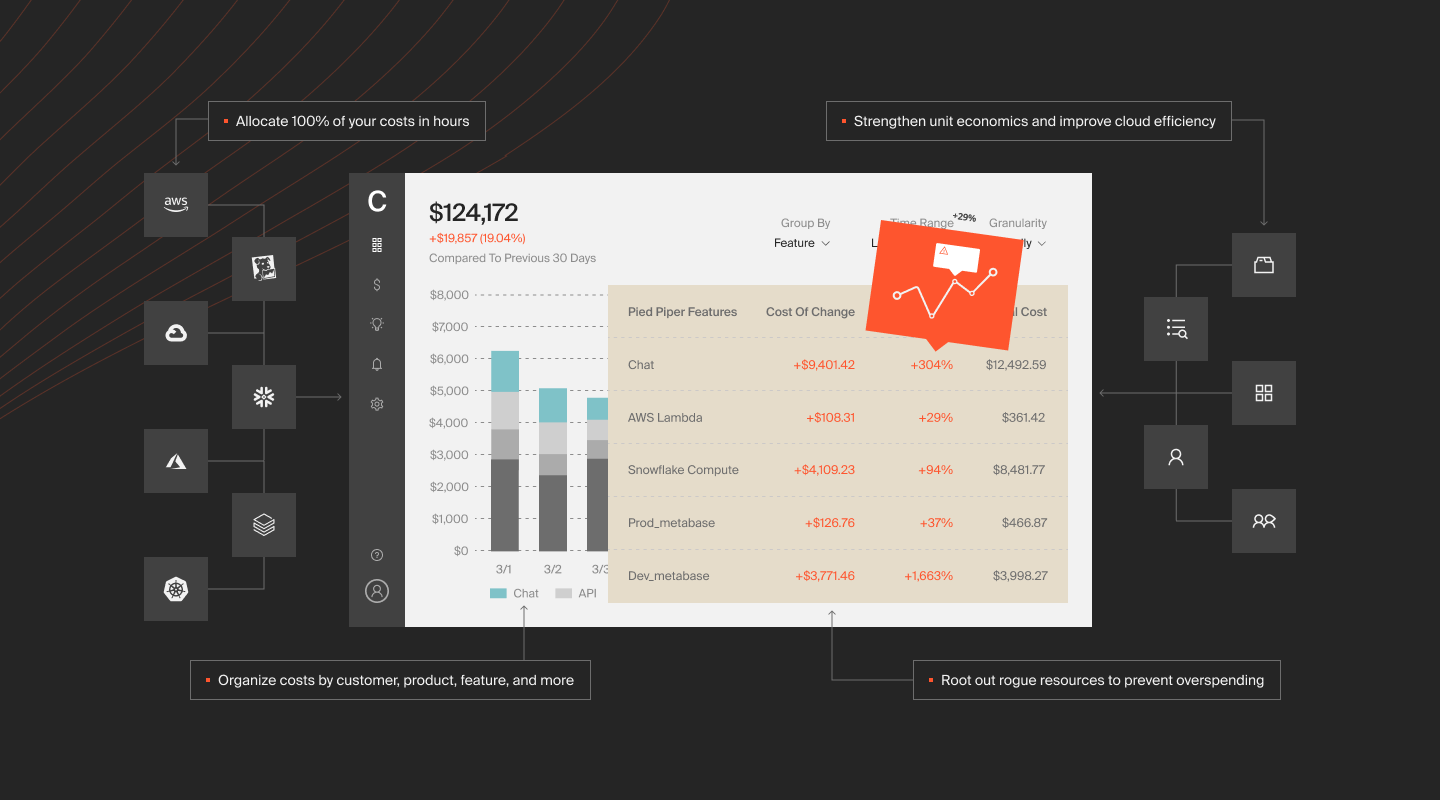
CloudZero is a cloud cost intelligence platform for AWS, Kubernetes, and Snowflake environments. Unlike basic cloud cost management tools, CloudZero accurately maps cost metrics back to the people, processes, and products that generate the metadata. CloudZero then breaks and reports the telemetry in easy-to-digest and actionable form, such as:
- Cost per product feature – See how much you spend on supporting a specific feature so you can price them profitably or determine how to reduce costs.
- Cost per dev team – Learn how specific teams spend resources and why so you can optimize their workflows.
- Cost per deployment – Measure the cost of launching a particular feature. Keep track of how that affects your costs.
- Cost per project – Track the cost of each engineering project from start to finish. This is helpful for forecasting, allocating resources to similar future projects, and pricing your services profitably.
- Cost per customer – Identify the cost of supporting each of your customers so you can charge them profitably.
- Cost per tenant – Find out how much it costs to support each individual tenant in a multi-tenant environment.
Your teams can use this granular cost intelligence to answer questions such as:
- If we added 10 customers tomorrow, how much would our costs change?
- Do we harness economies of scale?
- What trade-offs do we need to make to improve our costs per unit value?
- What is our utilization cost per customer per feature?
- How do we optimize each product feature to maximize gross margin?
- Which are the most valuable customer segments we should target more effectively?
- Are we spending more on AWS because of healthy growth or because we’re overspending?
You can also use CloudZero Budgets to track your Kubernetes, Snowflake, and AWS resource consumption and costs. CloudZero offers more, all of which you can see in action when you schedule a demo here.
CloudZero pros
- CloudZero breaks down costs to an incredibly granular level: cost per product, team, customer, and more
- Allocates cloud costs without the need for tagging
- Real-time cost anomaly detection
- Supports FinOps with a dedicated FinOps Account Manager for each client
- Wide integration capabilities with multiple cloud environments (AWS, Azure, GCP, Oracle Cloud) and SaaS products
- Helps forecast future cloud spending based on unit economics and historical data
- Offers immediate financial insights
- Empowers teams with real-time cost visibility linked to their infrastructure decisions
CloudZero cons
- CloudZero may not be the best fit for organizations focused solely on traditional cloud cost management strategies like committed use discounts. If you need a tool to help you monitor and optimize your AWS Reserved Instances (RI) or Savings Plans, ProsperOps can help. And if you need a platform that automatically replaces expensive On-Demand Instances with inexpensive Spot Instances whenever available, check out Xosphere Instances Orchestrator. CloudZero partners with both to bring you complete, automated cloud cost optimization.
2. Kubernetes – Container and microservices management platform
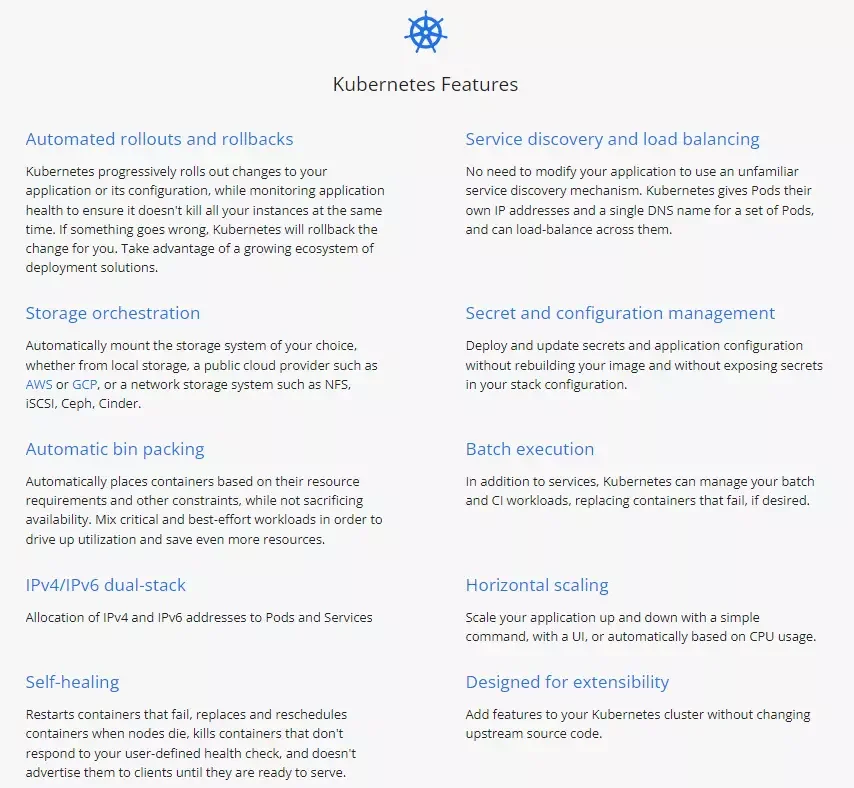
Kubernetes (K8s) is an open-source, production-grade, and highly extensible container orchestration platform. It can help ease the deployment and management of containerized applications and microservices anywhere: on-premises, public, private, or hybrid cloud.
K8s is renowned for its web interface, flexibility, and self-healing capabilities. The container orchestration platform also automates rollbacks and rollouts, batch execution, and load balancing. This means Kubernetes is ideal for managing distributed systems on a massive scale.
See our comparison of Kubernetes and Docker here: “Kubernetes Vs. Docker (Vs. OpenShift): The Ultimate Comparison”. To improve container management, see these 15 container monitoring tools and Kubernetes alternatives. You can also learn how to improve Kubernetes cost optimization in three steps here.
Kubernetes pros
- Automates container management, reducing infrastructure costs
- Speeds up DevOps workflows
- Efficiently manages workloads across multiple cloud providers without vendor lock-in
- Lightweight containers provide agility and portability across environments
- Automatically scales resources to meet demand with auto-scaling
- Provides high availability and self-healing capabilities
Kubernetes cons
- Lacks robust built-in monitoring and logging capabilities, users have to rely on third-party tools
- Requires substantial computing resources to run efficiently
3. Morpheus Data – Self-service hybrid cloud management and automation platform
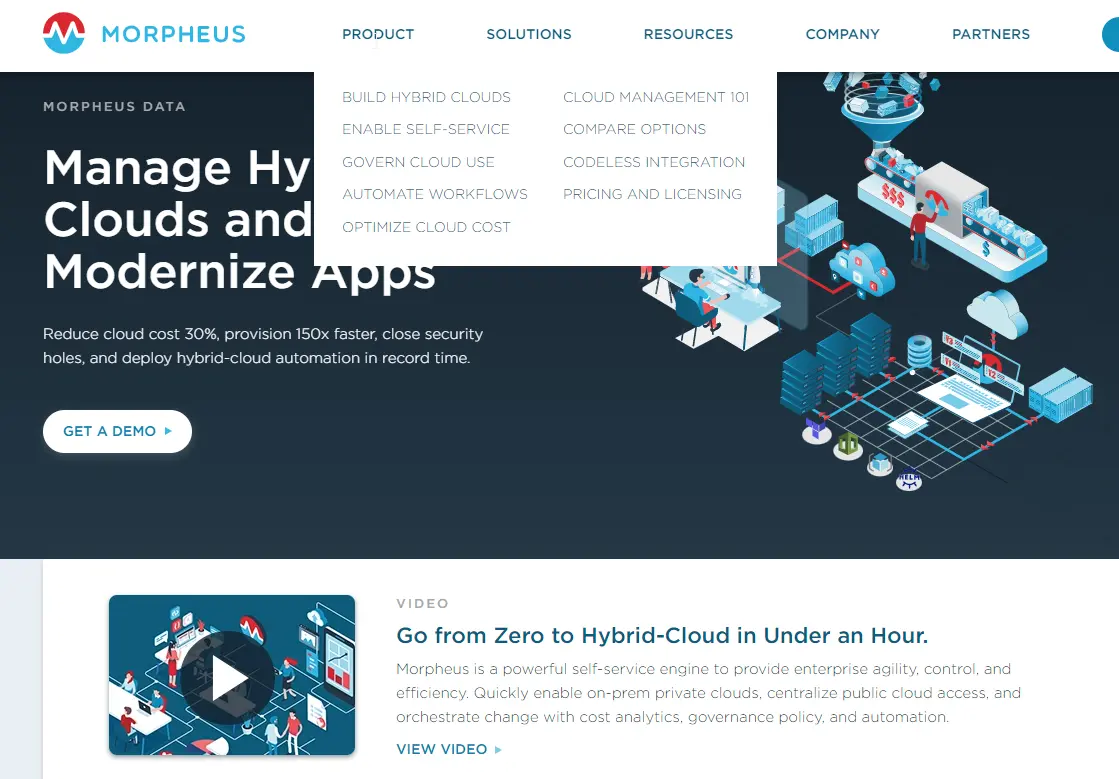
Morpheus Data is an agnostic platform with orchestration and cloud application management capabilities. It lets you build a private cloud, manage a public cloud, consolidate hybrid cloud workloads, and streamline Kubernetes management.
Morpheus Data also supports robust cloud governance, including authentication access control and security posture management. These features, among others, make Morpheus an ideal tool for managing virtual machines, container-based stacks, and the entire application development lifecycle.
Morpheus Data pros
- Vast multi-cloud integration, AWS, Azure, Google Cloud, VMware, and Nutanix,
- Robust automation and orchestration
- Supports true multi-tenancy
- Easy integration with DevOps tools
Morpheus cons
- Complexity in advanced use cases
- Not ideal for small to medium enterprises
4. Apache CloudStack – Open-source cloud management platform for small and medium businesses
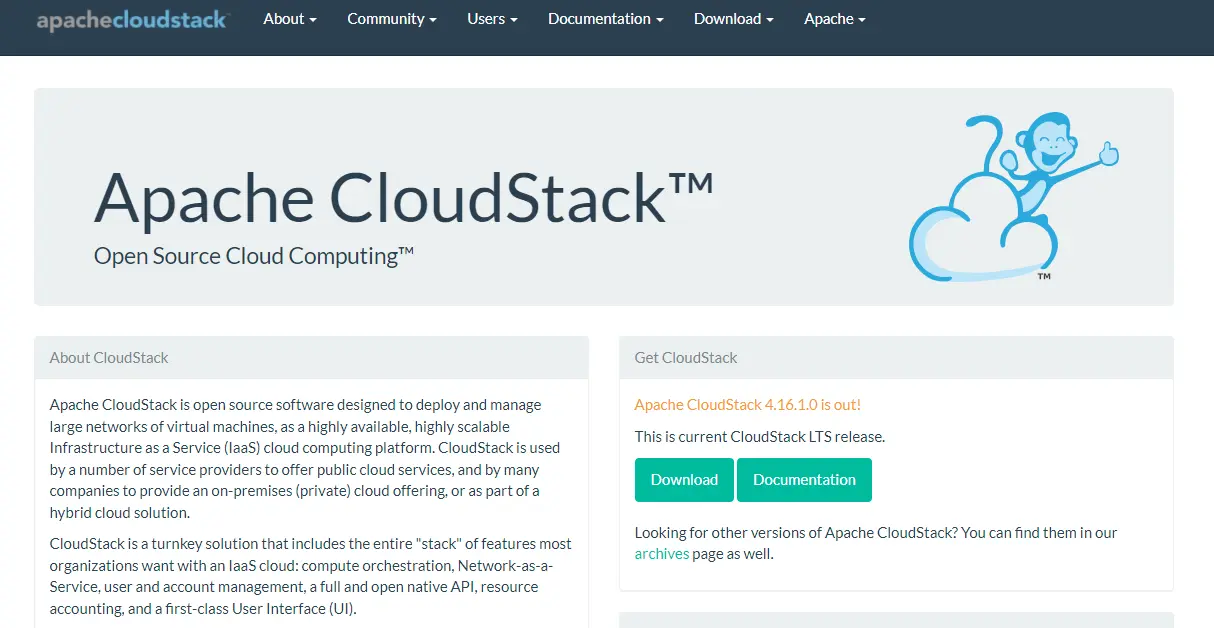
CloudStack makes building, deploying, and managing infrastructure cloud services easier. As an Infrastructure-as-Service provider, CloudStack enables you to create a private or public compute cloud using various computing resources, including network and storage services.
CloudStack’s robust features include resource provisioning using a graphical interface, cloud configuration automation, massive infrastructure scaling, uncomplicated API, and support for seven hypervisors and hypervisor technologies.
Yet, for an even more extensible, open-source cloud management platform for enterprises, you can check out OpenStack.
Apache CloudStack pros
- Simple setup process with user-friendly documentation
- Multi-hypervisor support, KVM, VMware, XenServer, and others
- Allows setting user quotas for better resource management
- Cost-effective cloud management software
- Supports both its own and Amazon’s APIs for flexibility
Apache CloudStack cons
- Limited scalability compared to OpenStack
- Complex upgrades
5. Terraform – Infrastructure-as-code software for managing multiple cloud services
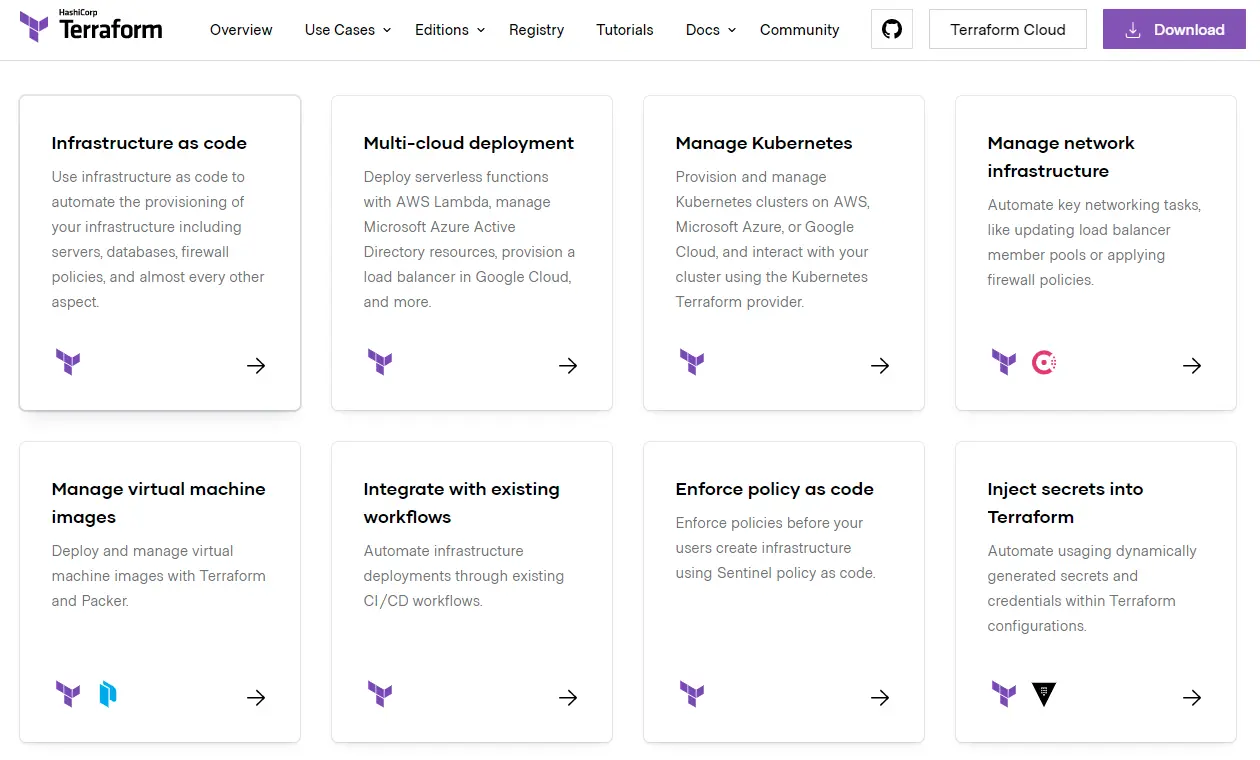
Terraform enables teams of all sizes to provision, change, and version cloud resources automatically on any infrastructure. It can do this on-demand or automatically in response to an event. With the open-source version, you can manage your cloud stack however you like.
With Terraform Cloud, your small team has access to a hosted service that enables them to run Terraform in a stable environment, link it to version control, share variables, and store remote state securely. Paid versions support larger teams.
Terraform Enterprise is a self-hosted version of Terraform. It offers a private instance for deploying all the advanced features of Terraform Cloud Business. Among those capabilities are running multiple concurrent runs, using SSO to manage user access, and building infrastructure in private environments.
Terraform pros
- Automates and manages infrastructure through code,
- Multicloud support
- Enables reusable and modular configurations, improving efficiency in complex environments
- Open-source platform
- Tracks changes to infrastructure efficiently
- Suitable for both small and large-scale environments
Terraform cons
- The syntax and structure can be complex for beginners
- Limited error handling
6. TotalCloud – Workflow-based cloud management software
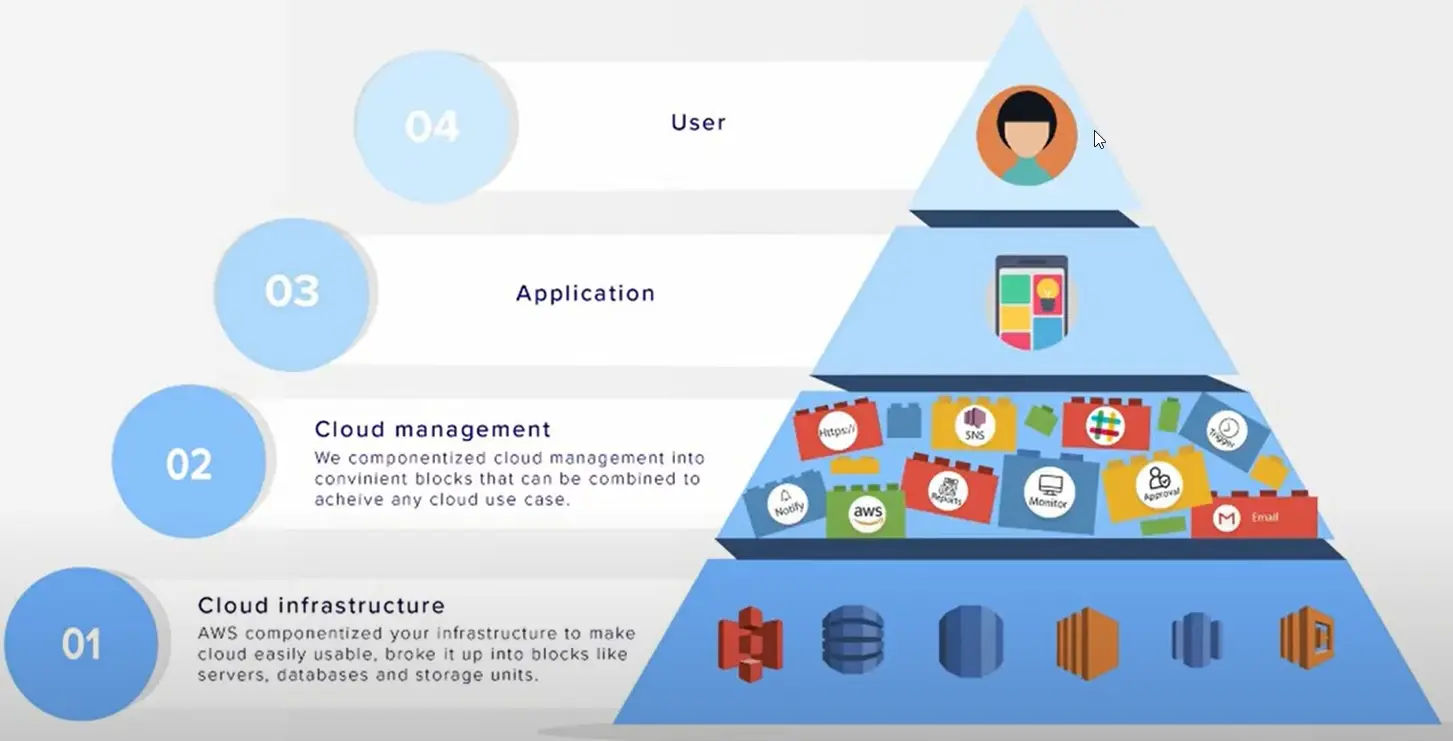
Qualy’s TotalCloud enables you to take advantage of complete customization to automate your cloud management, no matter how simple or complex your needs may be. With TotalCloud, you can create custom automation bots and workflows for cloud management without coding.
TotalCloud is also available for resource scheduling, performance monitoring, auto-remediation, and inventory management. Its multi-region and multi-account management capabilities allow you to simultaneously use it across accounts and geographical locations. The cloud management software supports AWS, VMware, Azure, and private clouds.
TotalCloud pros
- Robust automation features
- Supports major cloud platforms and private clouds
- Integrates with security tools such as Qualys FlexScan and TruRisk
- Real-time monitoring and remediation
TotalCloud cons
- Integrations can be costly
7. Cloud Orchestrator by IBM – Policy-based cloud management software

IBM’s Cloud Orchestrator facilitates the configuration, deployment, and provisioning of cloud services and integrates service management. Cloud Orchestrator also helps monitor, control, and back up your cloud environment quickly and securely.
As you upgrade your Cloud Orchestrator version, you can gain more advanced capabilities, such as multi-cloud management and a customizable self-service console. In addition, if you use or plan to use Turbonomic, the enterprise-grade application resource management platform, this would be a natural choice, considering IBM owns Turbonomic.
Cloud Orchestrator by IBM pros
- Simplifies end-to-end deployment processes, provisioning, monitoring, and cost management
- Comprehensive workflow automation
- Multi-cloud integration
- Features a customizable self-service portal
- Ensures strict compliance with service-level agreements (SLAs)
Cloud Orchestrator by IBM cons
- Can be complex to set up and use
- Expensive, especially for small and mid-sized organizations
8. RedHat Cloud Suite – RedHat’s All-in-one cloud management tools
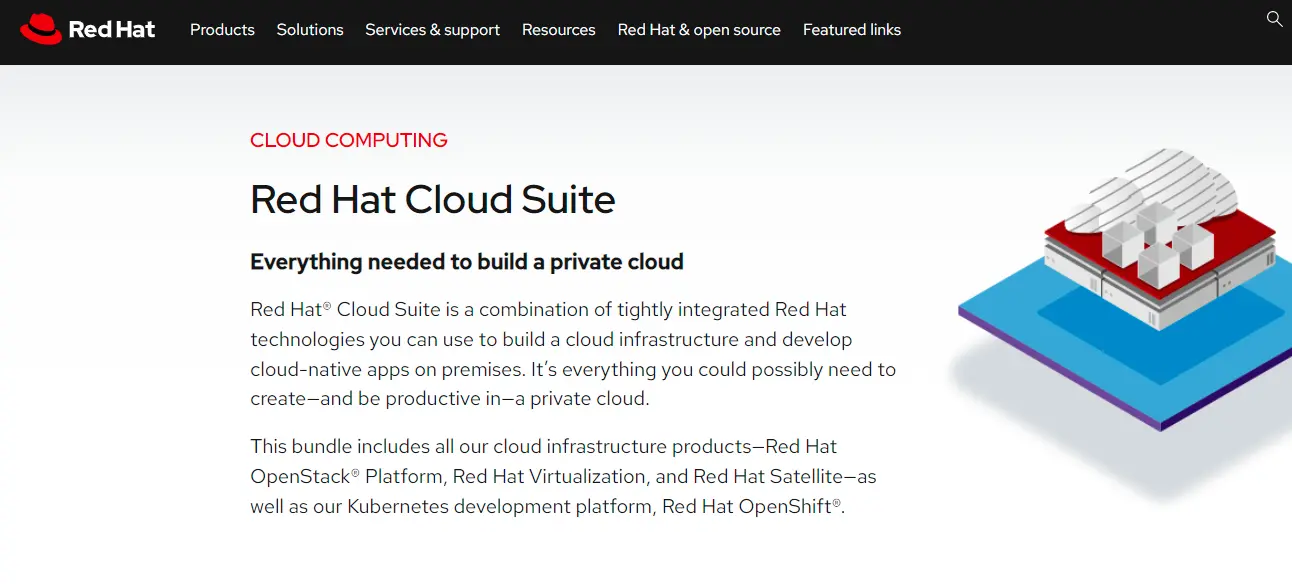
The RedHat Cloud Suite provides a single management framework for its container-based application development platform, built on a highly scalable cloud infrastructure. It helps accelerate cloud-based services for private cloud and app development.
Meanwhile, it leverages OpenStack’s public cloud-like services to improve control. CloudForm marries the application development and infrastructure administration, while Satelite helps with life cycle management. This makes Red Hat a powerful platform for organizations of all sizes looking to deploy cloud infrastructure or cloud-native applications on-premises or in the cloud.
Red Hat Cloud Suite pros
- Comprehensive integration with hybrid cloud environments
- Built-in automation and orchestration tools
- DevOps and CI/CD support
- Robust security integrations, especially for Kubernetes workloads
- Highly scalable
Red Hat Cloud Suite cons
- Complex for beginners and small teams
- High licensing and operational costs
9. AppDynamics – Cloud monitoring and management for on-premises and hybrid clouds
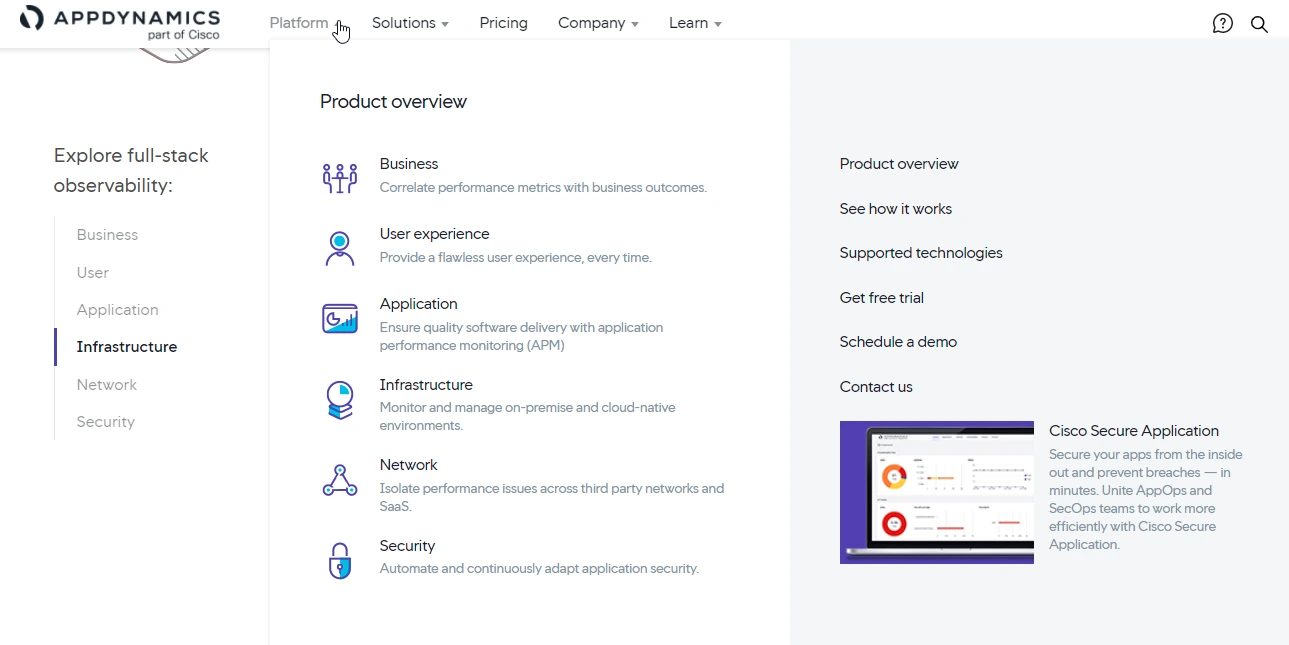
Cisco’s AppDynamics is known for its cloud migration and end-to-end application performance monitoring capabilities. However, AppDynamic offers full-stack management for cloud applications, infrastructure, networks, and security. Your team can also track end-user journeys with it, providing the insights they need to improve customer experience on your platform.
AppDynamics also supports real-time observability of server, database, and infrastructure resources. Because it automatically scales to meet demand, it is also ideal for cloud management use cases for different company sizes.
AppDynamics pros
- Full-stack monitoring platform
- Deep code level visibility, even for complex environments
- Integrates with multiple technologies and platforms
- Works seamlessly on-premises and as a third-party SaaS solution
AppDynamics cons
- Learning curve
- Complex pricing
10. Azure Management Tools – End-to-end Microsoft Azure cloud infrastructure management
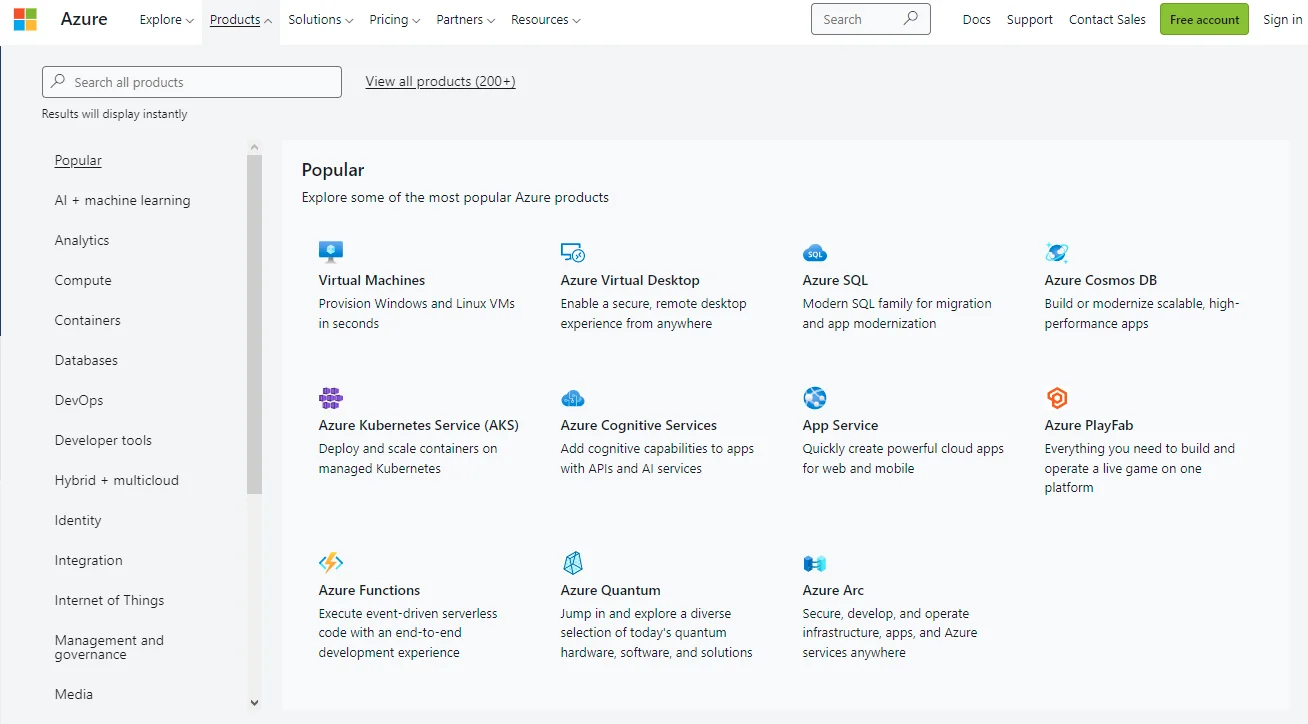
Microsoft Azure Cloud is the second most popular cloud service provider today, offering several management options. Azure management tools is a full suite of cloud management and governance services that help maintain control over your infrastructure and applications.
The tools can be used on-premises, Azure Cloud, or hybrid clouds. Other use cases include monitoring infrastructure, provisioning resources, updating apps, detecting threats, backing up resources, and automating tasks.
Azure management tools pros
- High availability with 99.95% uptime
- Supports both vertical and horizontal scaling
- Offers multi-layered security across cloud environments
- Advanced analytics and AI capabilities with Azure Synapse Analytics and Azure Machine Learning
Azure management tools cons
- Complexity can be overwhelming with so many services
- Can become expensive when considering add-ons like premium support, complex configurations, or multi-region setup
11. CoreStack – Multicloud governance software
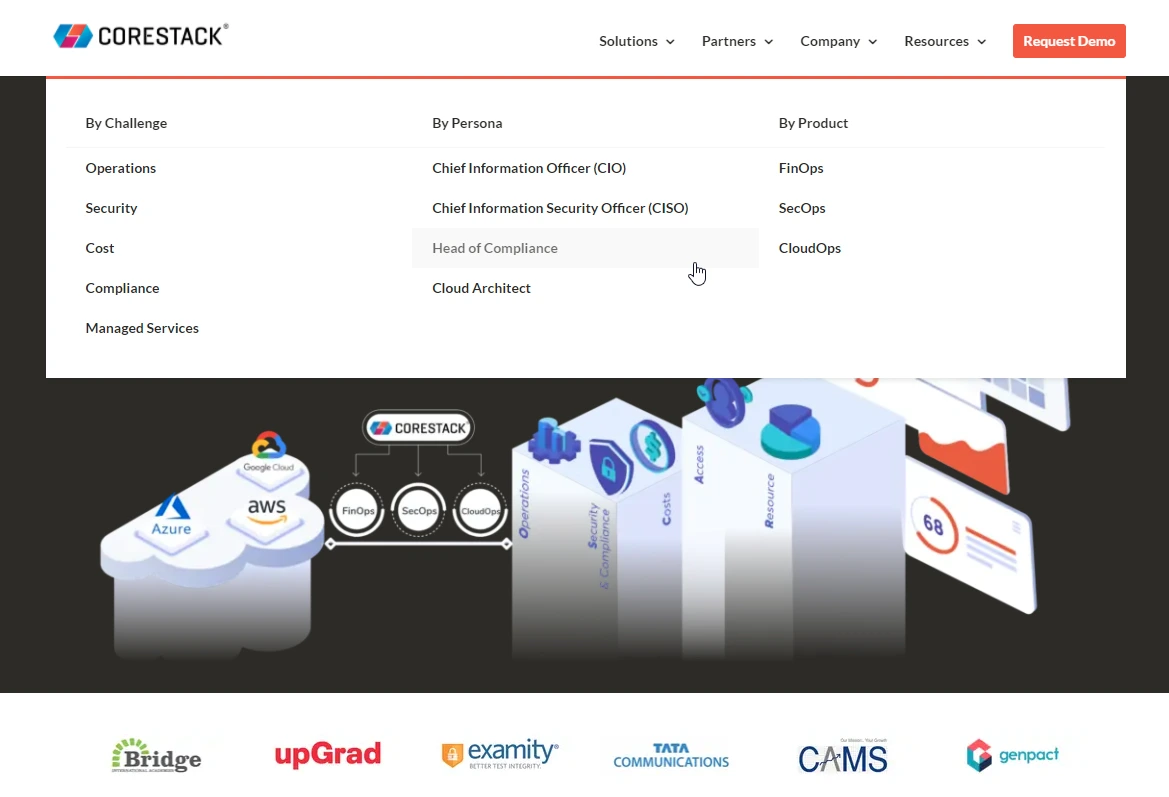
CoreStack is a SaaS solution for implementing a well-architected framework in the cloud. CoreStack provides infrastructure visibility across AWS, Azure, GCP, and Oracle Cloud. Most of its customers are enterprises looking to improve cloud management tasks such as resource usage tracking, real-time security monitoring, optimization recommendations, access control, and cost management.
CoreStack also supports NIST, ISO, CIS AWS, AWS Well-Architected Framework, CIS Azure, HIPAA, FedRAMP, and PCI DSS standards for continuous cloud compliance.
CoreStack pros
- Automates FinOps, SecOps, and CloudOps for better cloud management
- Ingereates sustainability measures within its platform
- Strong focus on compliance
- Provides actionable insights to eliminate unnecessary cloud spending
CoreStack cons
- Complex setup
- Limited integration flexibility
12. Sematext – On-premise and cloud-native infrastructure monitoring solution
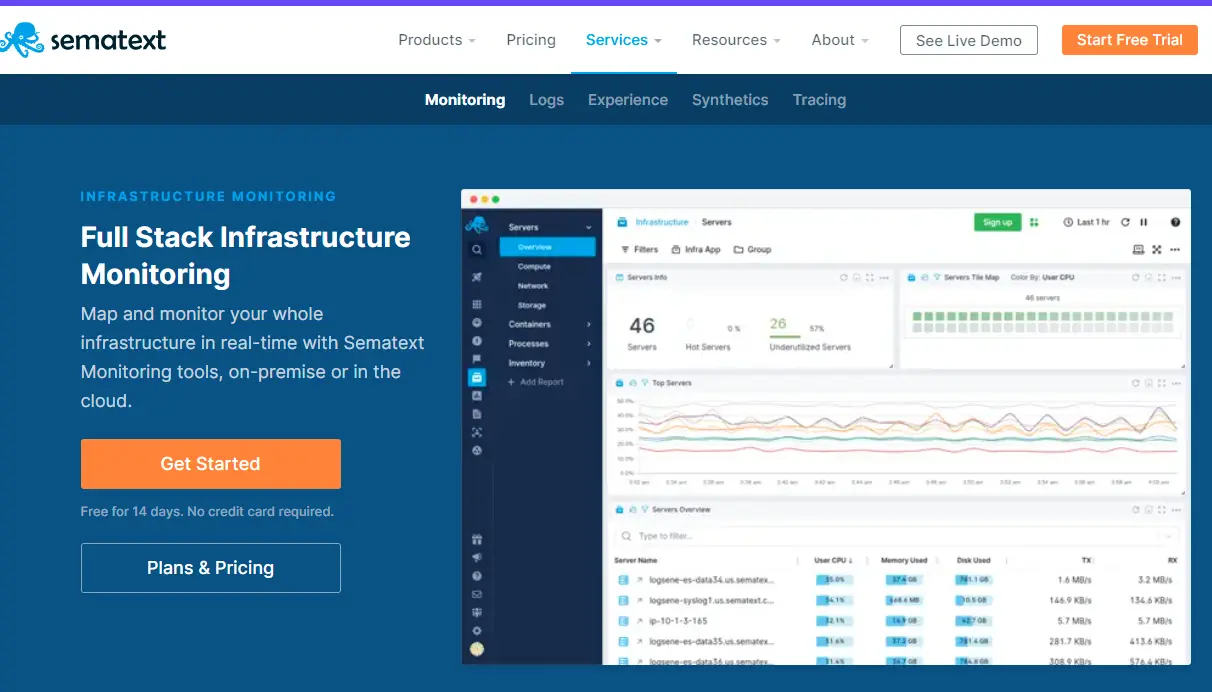
Sematext monitoring makes sense if you manage cloud-native and on-premises workloads, services, and applications. In addition to monitoring and automation, Sematext helps manage any public, private, or hybrid cloud.
The tool evaluates the health of your infrastructure using telemetry (metrics, events, and logs). You can expect continuous observation at the code execution level in real time. Through more than 100 integrations, Sematext allows seamless integration with most tools in your current technology stack. It also offers real-time monitoring for databases, servers, and containers.
Sematext pros
- Extensive integrations with third-party tools such as Docker, Kubernetes, and more
- Robust full-stack observability
- Flexible pricing
- Intuitive user interface
Sematext cons
- Limited free plan features
- Advanced features come with a higher price tag
13. SolarWinds – Hybrid cloud server monitoring software
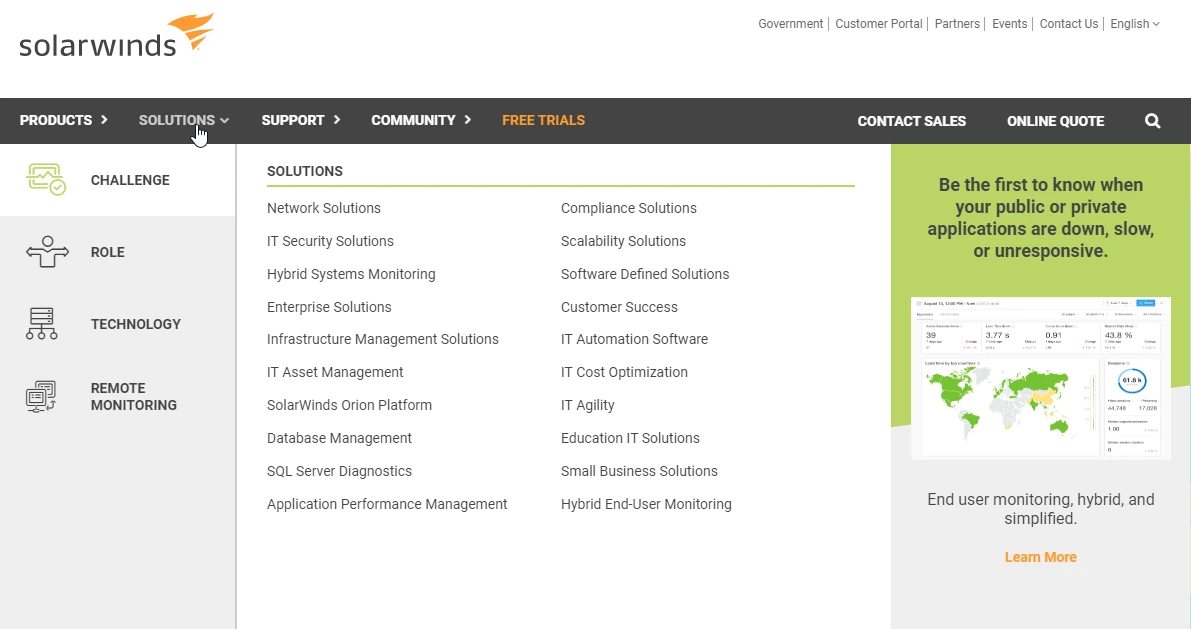
Whether you are trying to maximize visibility or control over AWS or Azure instances or VMs, SolarWinds can help. Its Orion Platform retrieves in-depth status, IP address insights, and resource usage across hybrid setups.
SolarWinds’ server diagnostics service also works with NetPath’s network monitoring tools to manage SAM, NPM, VMAN, and IPAM (AWS Route 53 records and Azure DNS Cloud Zones) needs. SolarWinds also provides cloud management tools for a variety of purposes, including application performance, infrastructure health, database usage, and network performance.
SolarWinds pros
- Extensive network monitoring
- Real-time alerts
- Many users find the interface intuitive
- Multi-vendor support
SolarWinds cons
- High resource usage
- Initial configuration can be time-consuming and complicated
14. LaceWork – All-in-one cloud security platform for companies of all sizes
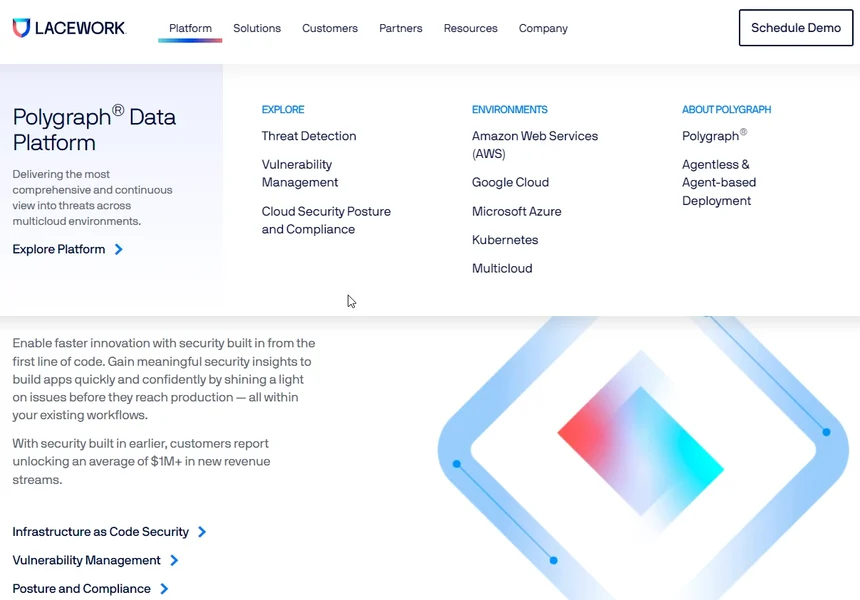
If you need a specialized cloud security service to manage your security posture, Lacework may be it. It utilizes AI and automation to safeguard medium- and large-scale cloud systems.
Lacework correlates various security threats across multiple platforms, including Amazon Web Services, Azure Cloud, and Google Cloud Platform.
Identifying the problem with context enables you to pinpoint critical vulnerabilities or issues so you can prioritize appropriate remediation. Lacework manages security administration for all apps, processes, workloads, services, containers, accounts, virtual machines, and users at the infrastructure level (IaC).
Lacework pros
- Excels in compliance management
- Detects threats through machine learning
- Prioritizes security alerts based on severity
- Offers agent-based vulnerability management
- Provides visibility across cloud environments, including Docker containers
Lacework cons
- Some users find that Lacework’s runtime behavior alerts lack detailed data
15. Sensu – Free, open-source, and hybrid cloud monitoring platform
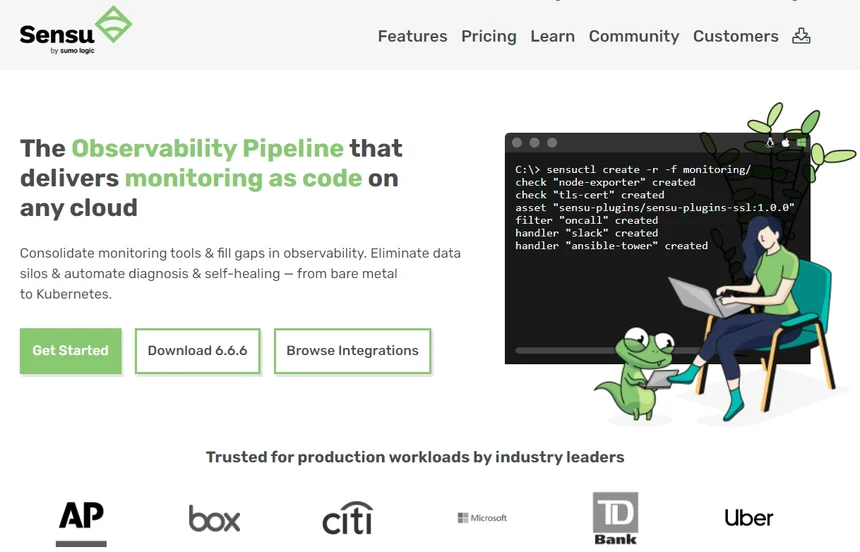
Sumo Logic’s Sensu is particularly strong at monitoring but can also manage infrastructure, servers, virtual machines, networks, and Kubernetes components. You can also monitor and manage cloud services across public, private, and hybrid clouds.
Sensu relies on Redis and RabbitMQ for data storage and messaging, respectively. It can seamlessly integrate with your favorite notification and messaging services, including Slack, PagerDuty, HipChat, and IRC. Sensu Go provides monitoring-as-code capabilities with multi-cloud, auto-scaling, and real-time orchestration.
Sensu pros
- Highly customizable to meet specific needs across different environments
- Compared to alternatives like Nagios, Sensu is easier to deploy and manage
- Active community support
Sensu cons
- Some users have reported challenges when integrating Sensu with other tools
16. Nutanix – Holistic Multicloud Management Platform
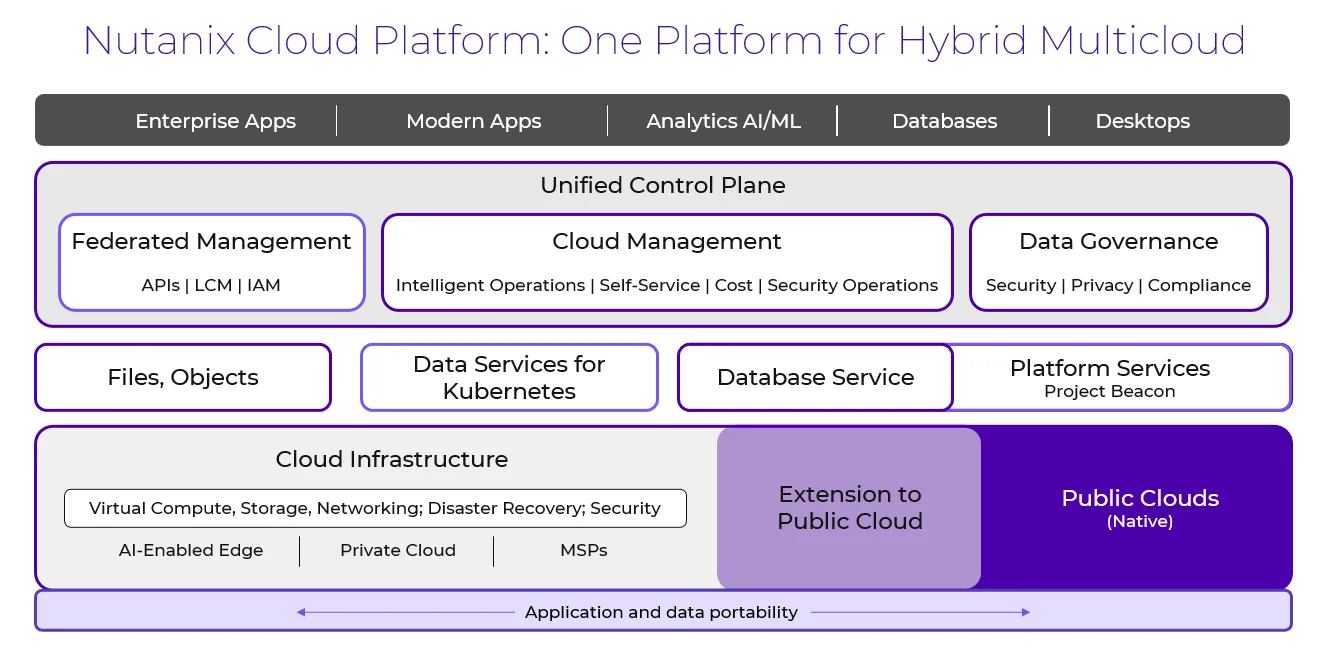
Nutanix Cloud Platform provides a unified solution for managing private and public clouds. It integrates computing, storage, and networking into a single system using hyper-converged infrastructure (HCI), simplifying cloud environment management.
Nutanix’s Prism interface enables users to control, monitor, and optimize cloud workloads from one dashboard, reducing complexity.
Moreover, Nutanix automates resource provisioning and scaling tasks, ensuring cloud environments adapt to demand. Its platform also focuses on security, offering features such as encryption and compliance tools to maintain data protection across all cloud deployments.
Nutanix pros
- Supports linear scalability
- Centralized management with Prism interface
- One-click upgrades for easy maintenance
Nutanix cons
- Steep learning curve for new users
Manage Your Cloud Spend With Cloud Cost Intelligence
The majority of cloud cost management tools only collect and report total cloud costs. But knowing how much you spent on AWS last month isn’t very useful. You’ll find it more useful to break down your cloud bill to identify the cost centers that drive your cloud spending. You can more accurately tell where to cut costs without negatively impacting system performance, team morale, or customer experiences.
Typical cost tools organize costs with tags. Collecting complete and accurate cost data is difficult without a near-perfect tagging strategy.
Besides, conventional cost tools do not give engineers a sufficient understanding of costs from the outset, which is key to making cost-effective architectural choices.
CloudZero’s Cloud Cost Intelligence platform is not your typical cost tool.
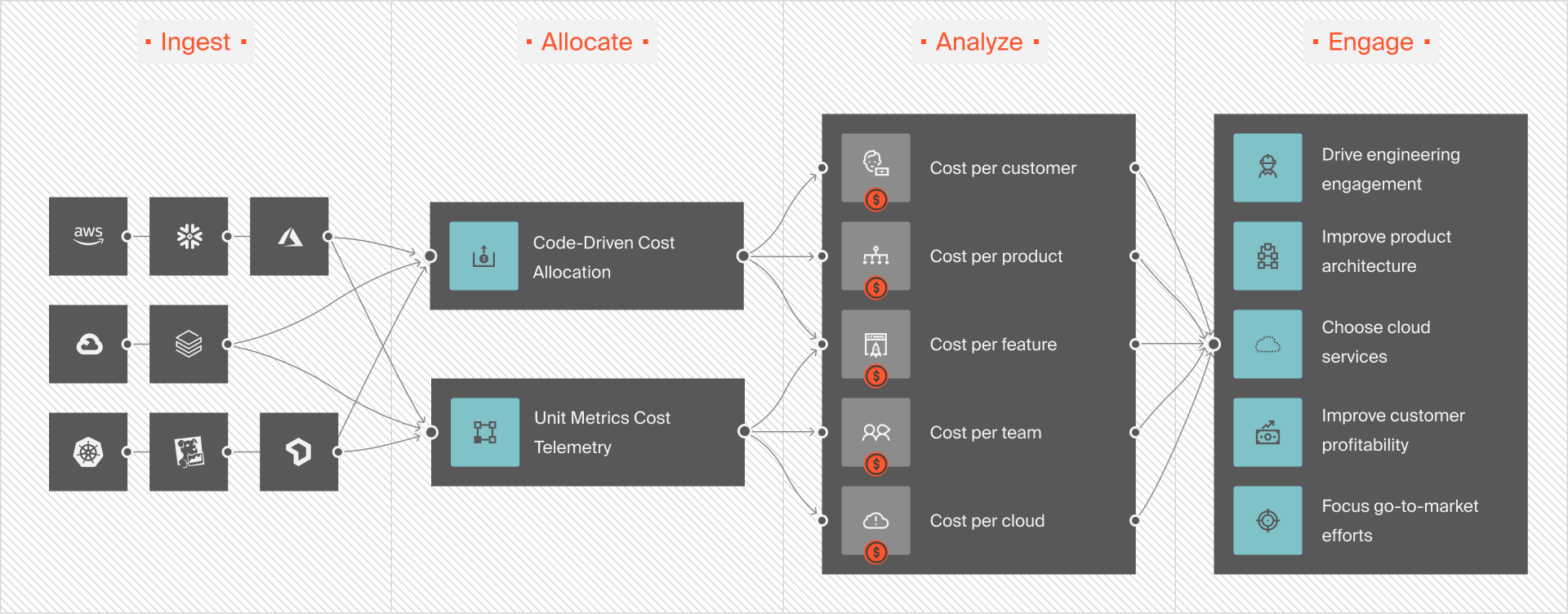
Here’s why:
- Our platform optimizes cloud cost for AWS, Kubernetes, and Snowflake environments.
- Typical cloud cost tools display totals and averages. With CloudZero, you can look and interact with granular, actionable insights like cost per customer, cost per feature, cost per project, cost per environment, cost per team, etc. You can use this information to set profitable feature prices, pricing tiers, sustainable customer discounts, accurate project allocations, etc.
- CloudZero accurately links cost metrics to the people, products, and processes that produce them. This means you can identify who, what, when, and why your cloud costs are changing, preventing unnecessary spending.
- Traditional cost tools place too much emphasis on tags. Instead, CloudZero gathers accurate cost data on tagged, untagged, untaggable, and shared resources across multi-tenant environments. No tagging is required.
- Other tools struggle to capture Kubernetes costs, but CloudZero’s Kubernetes Cost Analysis provides a complete view of your cost of goods sold (COGS) for containerized infrastructure down to the pod level.
- CloudZero’s continuous and real-time anomaly detection alerts you about trending costs and abnormal events.
- CloudZero also features cloud migration cost management, real-time budget tracking, and a custom pricing model — not based on a percentage of your cloud spend (as other cost tools do).
There’s more.
Our Cost Intelligence Team will help you maximize your cloud investment. These are not your average customer success professionals. Our team has experience helping trailblazer SaaS brands like Remitly, MalwareBytes, Drift, and Validity.
Heard enough already?  and see how CloudZero can manage cloud costs without slowing down innovation, growth, or engineering velocity.
and see how CloudZero can manage cloud costs without slowing down innovation, growth, or engineering velocity.

